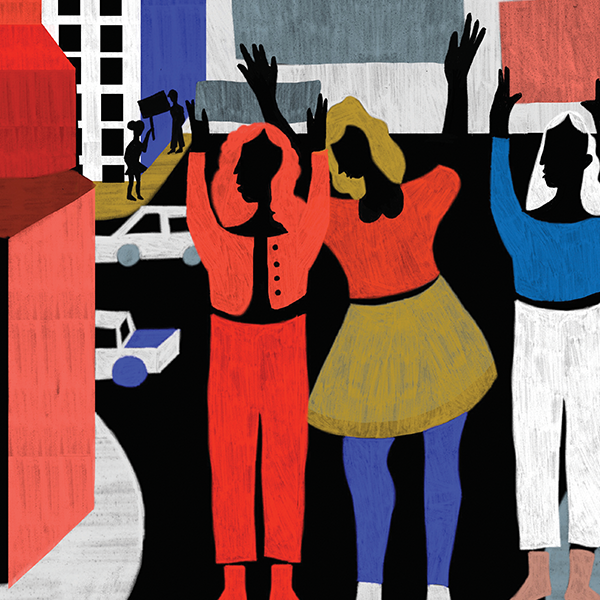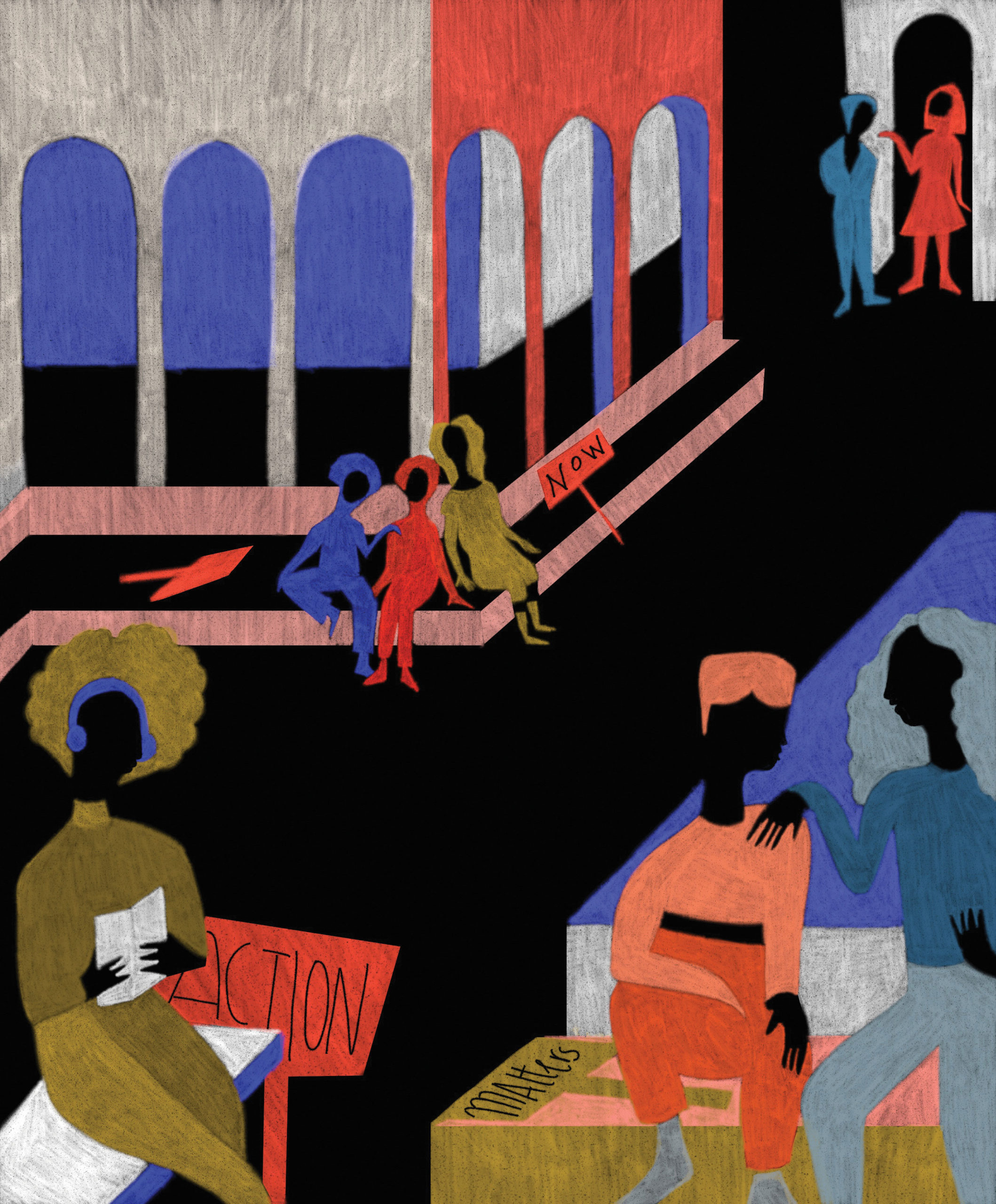
When George Floyd died under the knee of a white police officer on a Minneapolis street this past May, the world collectively recoiled in horror. His final eight minutes and 45 seconds of life, captured on cellphone video, exposed only the latest in a litany of high-profile deaths of Black citizens that had spawned the Black Lives Matter movement a half dozen years earlier. This summer, it became a truly mass movement, with huge multi-racial demonstrations in cities around the world and even in many smaller American towns unaccustomed to such activism. Protesters chanted the names. There were calls to change how communities are policed. In some U.S. cities, overwhelmingly peaceful marches were followed by violent confrontations.
But the movement also energized a much broader reckoning with the enduring injustice wrought by the nation’s fraught racial history and growing economic inequality. And for so many institutions in American society, it raised challenging questions. What does it mean to be “anti-racist”? Does “colorblindness” represent equality, or does it devalue difference? And how can an increasingly diverse country, despite the genuine progress that’s been made, finally address the systemic racial inequality that has been further revealed in the deeply disproportionate impact the pandemic has had on communities of color?
At Drexel, these questions consumed administrators, faculty and students throughout the summer and fall, ushering in a season of introspection that President John Fry called “long overdue.”
“We are not just going to talk,” said President Fry during a June 5 virtual Town Hall on race. “We are going to develop both short- and long-term goals and then take tangible and substantive actions to achieve these goals. Our commitment will be to change Drexel, deeply and fundamentally, together.”
Initial changes have been both symbolic — recognizing Juneteenth as a University holiday and naming Oct. 12 Indigenous Peoples’ Day — and concrete, such as establishing a Center for Black Culture in the Rush Building and launching an assessment of Drexel’s Police Department. To advance scholarly work on racial inequity, the University awarded 22 faculty members with grants from a $100,000 Rapid Response Racial Equity Project Award fund.
Drexel also convened an Anti-Racism Task Force of more than 100 students, faculty, staff and alumni in 11 subcommittees whose mission is to listen: to collect questions, comments and concerns from all Dragons. The group is developing specific action steps to breathe life into the University’s anti-racism pledges. Their recommendations will be shared in University’s 2020-2030 Strategic Plan, being finalized this year, and will influence Drexel actions and priorities for years to come.
Throughout the University, meanwhile, syllabi and lecturers are answering the need for explanation and representation. In the spirit of this as a teachable moment, Drexel Magazine asked faculty members who are conducting relevant scholarship to suggest one work from their area of expertise that illustrates the issues compelling calls for an end to systemic racism. Among them are professors of all races doing scholarship in justice reform, data bias, health disparities, identity and workplace discrimination, among related fields. They drew from their course material, their research or their personal readings to help us understand the moment and, hopefully, to grow from it.

Edward Kim
Associate Professor, Department of Computer Science • College of Computing and Informatics
Kim conducts research in computer vision, sparse coding and artificial intelligence. His current work examines racial and gender bias in the algorithms that underlay artificial intelligence and machine learning.
Cathy O’Neil. “Weapons of Math Destruction,” Crown Publishing Group, 6 September 2016.
We all have a certain worldview that makes sense of the world around us. A worldview can be thought of as thousands of models in our heads, that take what we know, tell us what to expect and guide our decisions. As computer scientists, we can formalize these models into an algorithm and distribute these models at scale. However, what happens when the mathematical models we create are racist, biased or flawed? This is the premise of “Weapons of Math Destruction” by mathematician Cathy O’Neil.
At an individual level, racism is a human predictive model that is built upon faulty, incomplete and generalized data. It is reinforced by confirmation bias and spurious correlations.
Mathematical models, meanwhile, are often marketed as fair and objective. After all, algorithms do not “see” race and are not prejudiced. They base their decisions upon big data patterns and correlations that arise from statistics. This is in part true; however, as uncovered within the book, algorithms that are opaque and deployed at scale can create serious damage.
For example, most people agree that it is not OK to use race when distributing bank loans. But is it OK to use ZIP codes? Should the history of human behavior in a patch of geography determine what kind of loan rate you get? In other words, the algorithm is asking the question, “How have people like you behaved in the past?” rather than “How have you behaved in the past?”
It’s important for all of us to be aware that mathematical models learned from big data codify the past. These models often include simplifications and generalizations that do not reflect the complexities of real life. We need to be aware of what the model seeks to optimize, be careful of broad categorization, and when possible, explicitly program moral values and ethical decision-making into the mathematical objectives. In the end, we need to remember that the error or outliers in our dataset are not just data points or mathematical symbols, but rather reflect human injustice, prejudice practices and casualties.
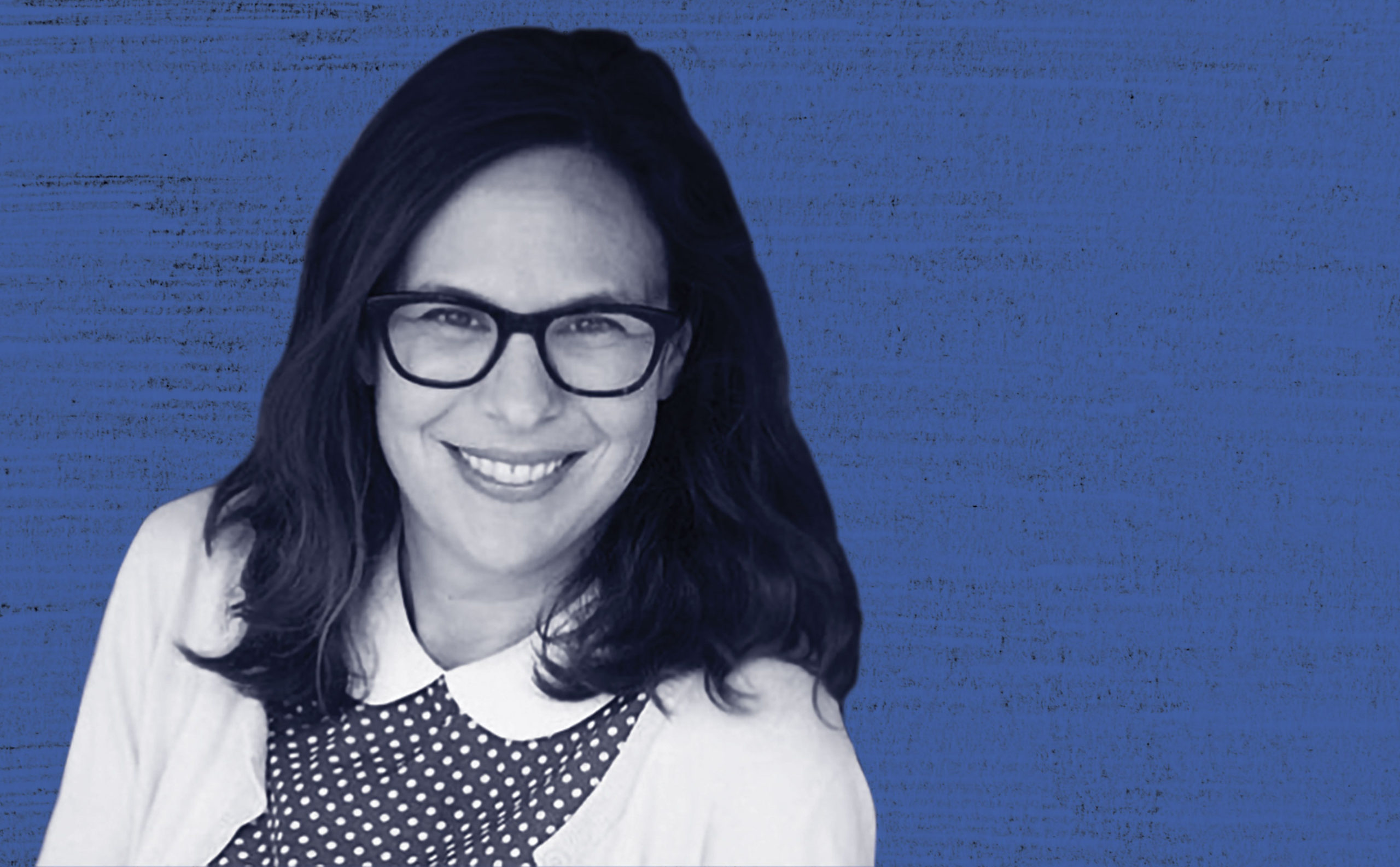
Sharrona Pearl
Associate Teaching Professor, Department of Health Administration • College of Nursing and Health Professions
An historian and theorist of the body and face, Pearl researches how we perceive people based on their faces. Other areas of interest include critical race, gender and disability studies; media studies, science and performance; freak shows through history; and the ethics of images.
In the spirit of this moment, I turn to my own syllabi in health care ethics. The very first two readings I assign purposefully center the voices of Black women scholars to reflect upon the particular ways that racism, history and lack of privilege intersect to disproportionately affect Black people in the United States. These are absolutely ethical and public health issues that are vital to name, acknowledge and identify as part of the struggle against structural violence, discrimination and racism, and to honor the pain, rage and terror that Black people are experiencing at this moment in history.
These pieces are two New York Times op-eds that powerfully place the current epidemic and its devastating effects on Black Americans in particular in a historical, cultural and sociological context.
In “It’s Not Obesity, It’s Slavery,” University of California–Irvine sociologist Sabrina Strings challenges the easy and wrong narrative that Black people are dying more because of obesity — it’s simply not true. Strings then carefully shows how health disparities, access and life expectancies among Black Americans can be traced to the continuing and ongoing legacies of slavery that still see the bodies of Black people as less worthy of health care and support.
In the second piece, “Remember, No One Is Coming to Save Us,” Roxane Gay, currently a visiting professor at Yale University, takes up related themes, highlighting the ways that a vaccine for COVID-19 will staunch the effects of one of the epidemics currently taking the lives of Black Americans, but will offer no suture for racism. As the current pandemic shows and Gay forces us to acknowledge, racism causes death: at the hands of the police and the state, as a result of medical catastrophe, because of poverty. Black lives do not, Gay forces us to witness, matter. Despite the hashtags and rallies and marches, they do not yet matter. The longing to return to normal is no longing for those for whom normal is also death.
These pieces are not just beautifully written, carefully researched and narratively impactful. They are not just compelling, and personal and profound. They are the mirror that we need to the past, and the framing we need of the present, if we are to create a future in which Black lives matter to everyone.
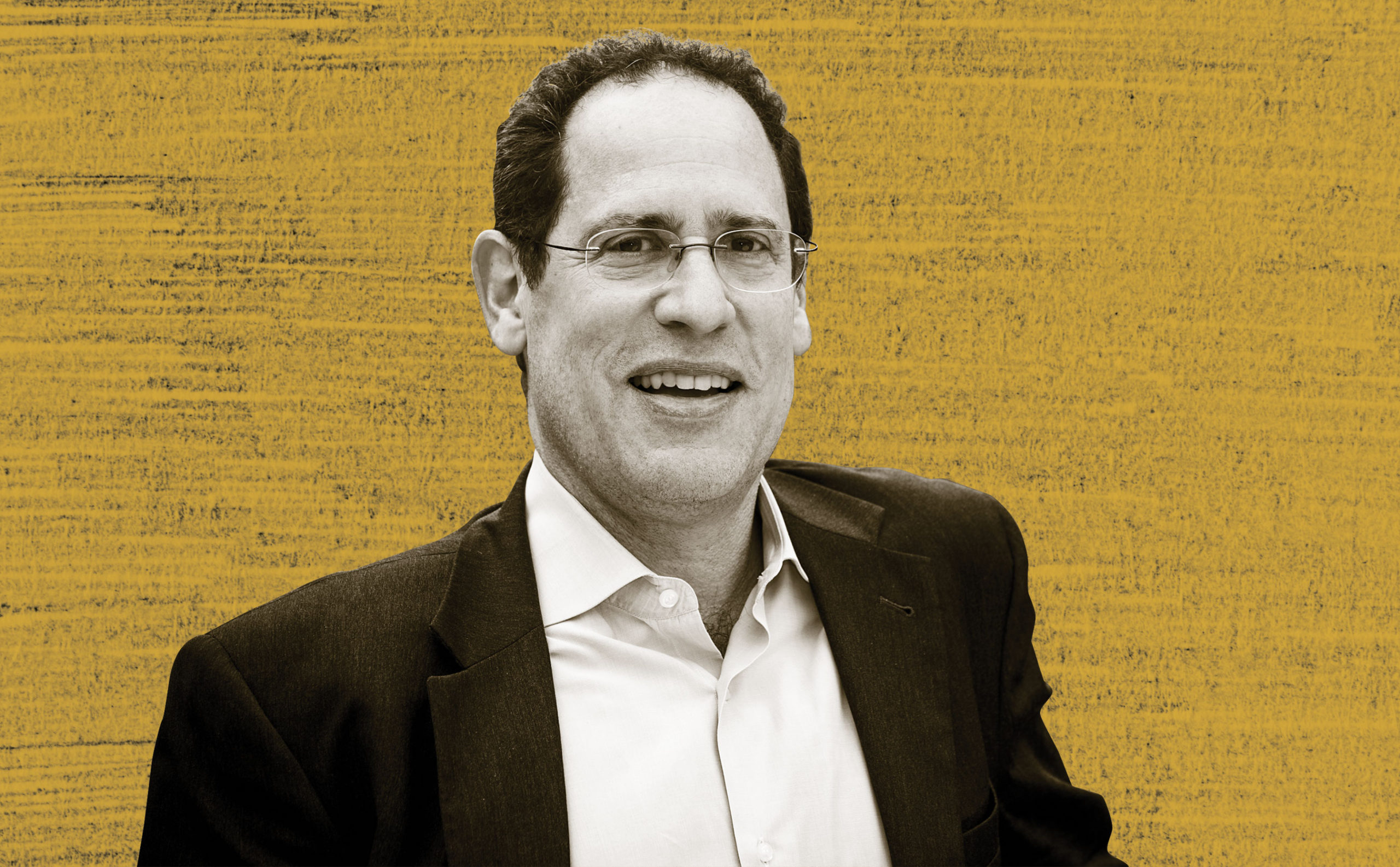
Bruce Katz
Co-Founder and Director, Nowak Metro Finance Lab • Lindy Institute for Urban Innovation
Katz is the director of the Nowak Metro Finance Lab within Drexel’s Lindy Institute for Urban Innovation, which seeks to equitably advance cities and train the next generation of urban leaders. Currently, the lab is developing a scorecard of minority-owned businesses to troubleshoot economic recovery.
Ta-Nehisi Coates. “The Case for Reparations,” The Atlantic, June 2014.
“The Case for Reparations” by Ta-Nehisi Coates is one of the most powerful indictments of the structural racism that has permeated the U.S. land, housing and financial sectors since the founding of the republic.
Coates’ essay shows in excruciating detail how a toxic mix of government policies, predatory practices and parasitic capital have not only suppressed the growth of Black wealth in the United States but have also extracted income and assets from families living in segregated neighborhoods.
One cannot discuss the current state of Black wealth and Black home- and business-ownership in the United States without understanding Coates’ painful recitation of history. The COVID-19 crisis has precipitated a massive recession among small businesses that is unlike anything our nation has experienced prior.
At the same time, the civil unrest following George Floyd’s death has exposed our deep racial disparities on income, health and wealth, particularly around business ownership and capital access. Data already shows that businesses owned by people of color have been the hardest hit during the pandemic, given their typical concentration in vulnerable sectors, their low capital reserves and their lack of access to capital in general and to federally designed relief products in particular.
Coates’ essay is an inspiration and provocation to the work of the Nowak Metro Finance Lab, which works with partners across the country to assess the impact of economic contraction on minority-owned small businesses and encourage relief efforts.
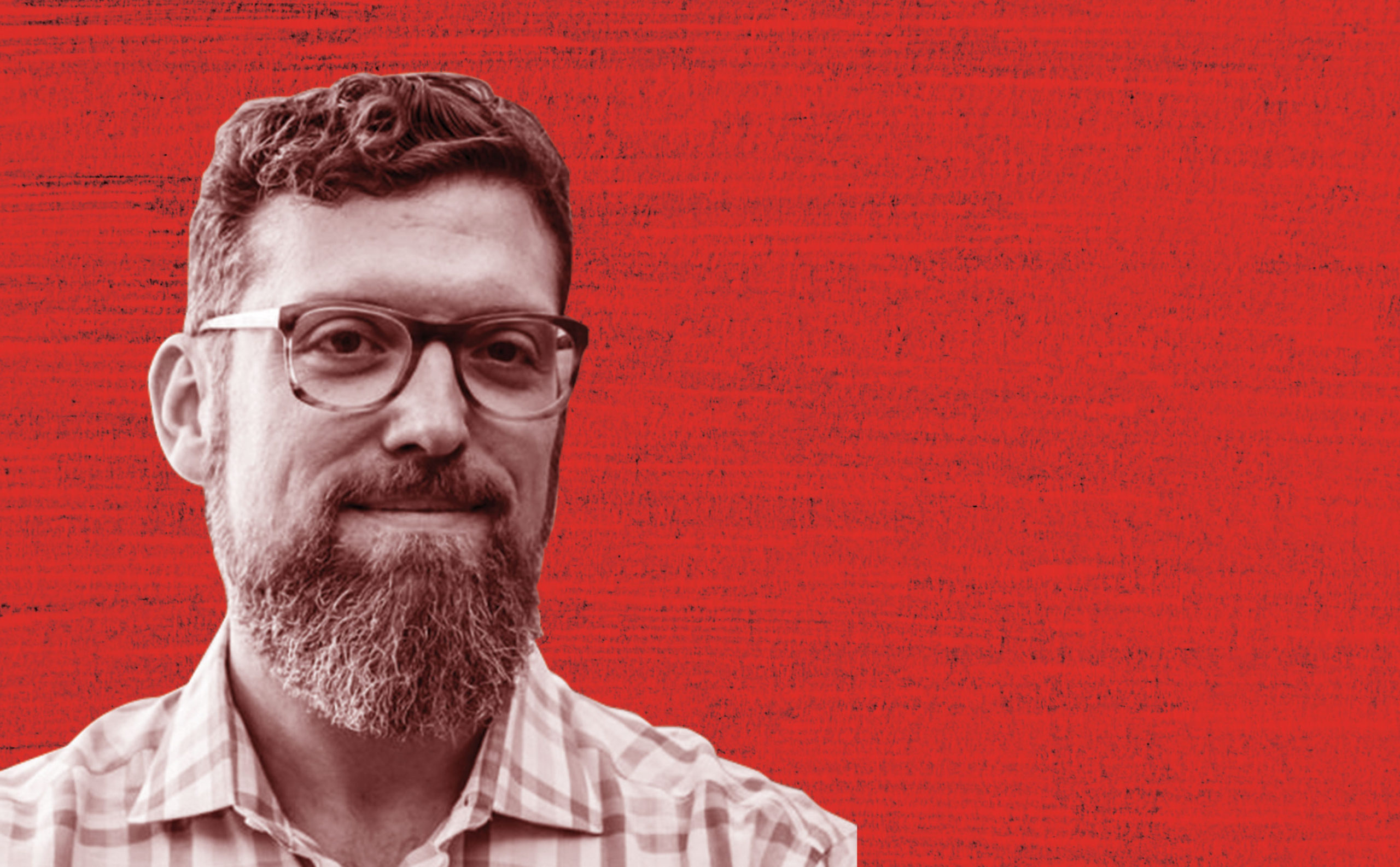
Jordan Hyatt
Assistant Professor, Department of Criminology and Justice Studies • College of Arts and Sciences
Hyatt’s research in corrections and reentry focuses on the evaluation of criminal justice policies and interventions. His goals are to help develop actionable, evidence-based public policies that improve humanity, reintegration and public safety for agencies, justice-involved individuals and communities.
The criminal justice system has become increasingly reliant on electronic resources in its day-to-day operation. Understanding this landscape is essential for addressing the ongoing harms and stigmatization of our current system.
In her new book, “Digital Punishment: Privacy, Stigma, and the Harms of Data-Driven Criminal Justice,” Rutgers sociologist Sarah Esther Lageson convincingly outlines just how pervasive — and potentially harmful — these datasets can become when they are posted online and made available to the general public. The core of the modern criminal justice system is the billions of records that are created as the system functions. Most are well-protected, and access is limited, but many are not. These include electronic law enforcement blotters, listing out the names of everyone who has been arrested by the police, inmate lookups provided by correctional agencies and publicly available criminal dockets hosted by local court systems.
While this has arguably increased both transparency and efficiency, Lageson argues that these datasets also magnify the collateral consequences and the stigma of a conviction, especially for minority and impoverished individuals. Criminal court data, for example, are often purchased in bulk by for-profit companies, combined with other information like credit histories, and then sold as unofficial background checks for employment and housing. Mugshots and jail booking photos are posted on other websites, even when the individual is found not guilty, and may remain public unless a fee is paid.
Through these channels, criminal justice datasets are coopted and monetized by weakly regulated for-profit companies, Lageson claims, and individuals are revictimized. These online records are often just a Google search away, shadowing individuals for the rest of their lives, even when their convictions are decades old.
“Digital Punishment” clearly describes a modern Pandora’s Box — after all, the internet never forgets — while also providing important new insight into the intersection between our networked society and a criminal justice system that still operates under assumptions about privacy, security and harm that are more appropriate for an analog world.

Brea M. Heidelberg
Associate Professor and Program Director, Entertainment & Arts Management • Westphal College of Media Arts & Design
Heidelberg’s research in arts and cultural management focuses on professional and organizational development through the lens of diversity, equity, inclusion and access. Her current work examines the intersection of nonprofit human resources practices and equity in arts organizations.
“The Wire.” Written and produced by David Simon, HBO, 2002–2008.
In the field of arts management, helping artists tell compelling stories is the most meaningful part of our work. We believe that the arts can reflect and change the world.
To that end, I would encourage everyone to watch season four of David Simon’s crime drama “The Wire,” which ran on HBO in 2006. Over its five seasons on television, the show created an in-depth portrayal of the narcotics trade in Baltimore that examines the issue from the vantage points of drug dealers, law enforcement and those suffering from drug addiction, using that specific context to highlight racial inequities and critique capitalism.
If you are able to see all of the characters as human and deserving of the kind of grace usually reserved for white middle- and upper-class individuals, then seeing the devastating intersection of race and socioeconomic status, specifically for the Black poor, can illuminate concrete examples of the issues discussed by Black scholars throughout the history of the United States.
The fourth season in particular deals with the education system through the eyes of young Black boys in a purposefully underfunded middle school housed in a low-income area. (Note the focus on boys only; I would argue that sexism prevents any meaningful storytelling from a Black girl’s perspective, and that we can see that silencing echoed in public policy such as the Obama Foundation’s My Brother’s Keeper Alliance.)
When I first watched this season many years ago, it broke my heart. I have heard many people discuss “The Wire” through the lens of “poverty porn,” where privileged audiences consume hardship as spectacle — but the stark difference between the way addiction within the Black community is criminalized while opioid addiction in the predominantly white population has received empathy and support is unmistakable.
This viewing is especially important for a Drexel alumna, faculty member, parent and Philadelphia resident like me. As a student, I took part in the University-wide course that plopped Drexel freshmen into underfunded public schools to teach financial literacy. I now understand that the icky feeling I had while teaching third graders about financial responsibility was an aversion to participating in a savior-esque initiative promoting the idea that disenfranchised people can bootstrap themselves out of purposeful marginalization by saving part of their wages. I view that season of “The Wire” and its commentary on inequitable school funding through the eyes of a parent looking at the grossly inequitable public-school system in Philadelphia. I look at how property and its relative value is discussed during that season from the vantage point of being a Drexel faculty member who is eligible to take advantage of Drexel’s home purchase assistance program, but is unable to use it due to a lack of intergenerational wealth, a reality for most Black families. And I look at how the University’s development influences gentrification in surrounding neighborhoods that has pushed out long-time residents and inflated home prices.
With exhausted skepticism, I view the plight of the boys depicted in that season through the eyes of a city resident who is watching the space where Drexel is, in partnership with the school system, erecting a building to house Samuel Powel Elementary and Science Leadership Academy Middle schools. At a moment when members of both the University of Pennsylvania and Drexel communities are banding together to ask the nonprofit institutions to voluntarily surrender their property tax exemption, this is a particularly timely watch.

Ramesh Raghupathi
Professor, Department of Neurobiology and Anatomy • College of Medicine
Raghupathi’s work in the College of Medicine centers on examining the effects of traumatic brain injuries. He is studying, in collaboration with Drs. Andrea Wiechowski and Giacomo Vivanti of the A.J. Drexel Autism Institute, whether racial disparity contributes to delayed diagnosis of autism spectrum disorders in children with brain injury.
Ed Yong, “How the Pandemic Defeated America” The Atlantic. September 2020.
Vann R. Newkirk II. “America’s Health Segregation Problem,” The Atlantic. 18 May 2016.
While most of us are aware of the death toll and economic consequences of the COVID-19 pandemic, less attention has been paid to the pandemic’s disparate racial impact, which has been particularly adverse for Black, indigenous and other minority communities. On these topics, I turn to writers in The Atlantic, particularly science writer Ed Yong. Both online and on Twitter, Yong makes a strong case for how the ineptitude of the public health system and the misinformation engine on social media together pushed the country to the depths of illness and death.
In the September issue of The Atlantic, he provides a backgrounder on the situation that describes how and why a particle smaller than an average human cell brought the world’s most powerful country to its knees economically and medically. He extensively details why the United States was hammered by the pandemic — from the inequities of the health care system to the inadequacies of the infrastructure of hospitals and buildings.
The part of his essay that particularly caught my attention was when he delved into the reasons why almost 50 percent of minorities and 30 percent of Black Americans do not have adequate (read: any) health care coverage. Whether this was a consequence of segregationist policies from the middle of the 19th century or the systematic dismantling of civil rights for minority communities, it is clear that racial disparity has a large effect on the health of these groups. In turn, this leads to reduced economic success: Without good health, can workers continue to work? Without sustainable jobs, do workers have access to good health care?
Yong’s articles and earlier work by Vann Newkirk in The Atlantic provide a very good explanation for the causes and consequences of a system that marginalizes communities of color.
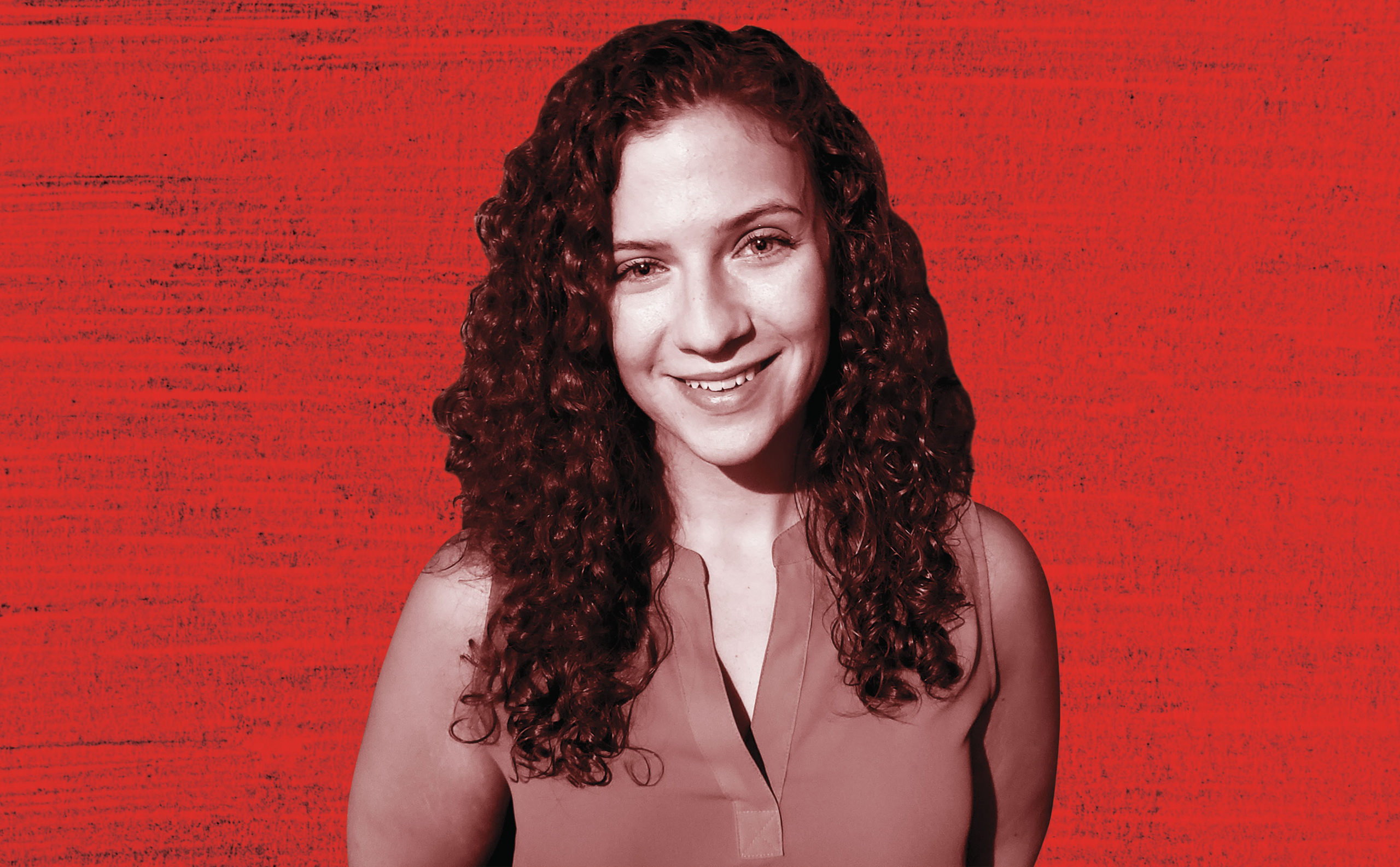
Kathleen Powell
Postdoctoral Fellow in Criminology and Justice Studies, Department of Criminology and Justice Studies • College of Arts & Sciences
Powell’s research broadly assesses the collateral consequences of involvement with the justice system, with a focus on health and inequality over the life course. She is currently studying racial differences in the link between school suspensions and arrests.
“Raised in the System.” Produced by VICE News. HBO, 6 April 2018.
I often screen the VICE News documentary “Raised in the System” in my courses because it poignantly and powerfully explores the challenges faced by Black youth in the justice system and the failure of institutional responses to meet their needs.
The 50-minute documentary, which aired in 2018 in the sixth season of HBO’s weekly televised news magazine “VICE News,” uses firsthand accounts of persons actively or previously incarcerated. It uniquely elevates their voices with scenes and interviews that illustrate the root challenges they faced leading up to their involvement in the juvenile system, such as under-resourced schools, traumatic personal histories or parents who are absent, sometimes due to incarceration.
Further, “Raised in the System” considers how juvenile courts’ responses to delinquent behavior are often more closely aligned with goals of retribution than foundational rehabilitative principles of juvenile justice. While some scenes provide hope by exploring programs rooted in social support and mentorship, viewers see that many other court-administered sanctions fail to prioritize treatment as a way to improve these youths’ lives and to prevent future crime.
In all, the producers make a compelling case that injustices will proliferate across generations if we don’t solve problems in juvenile justice and policy responses continue to prioritize punishment over treatment for the most vulnerable youth in society.
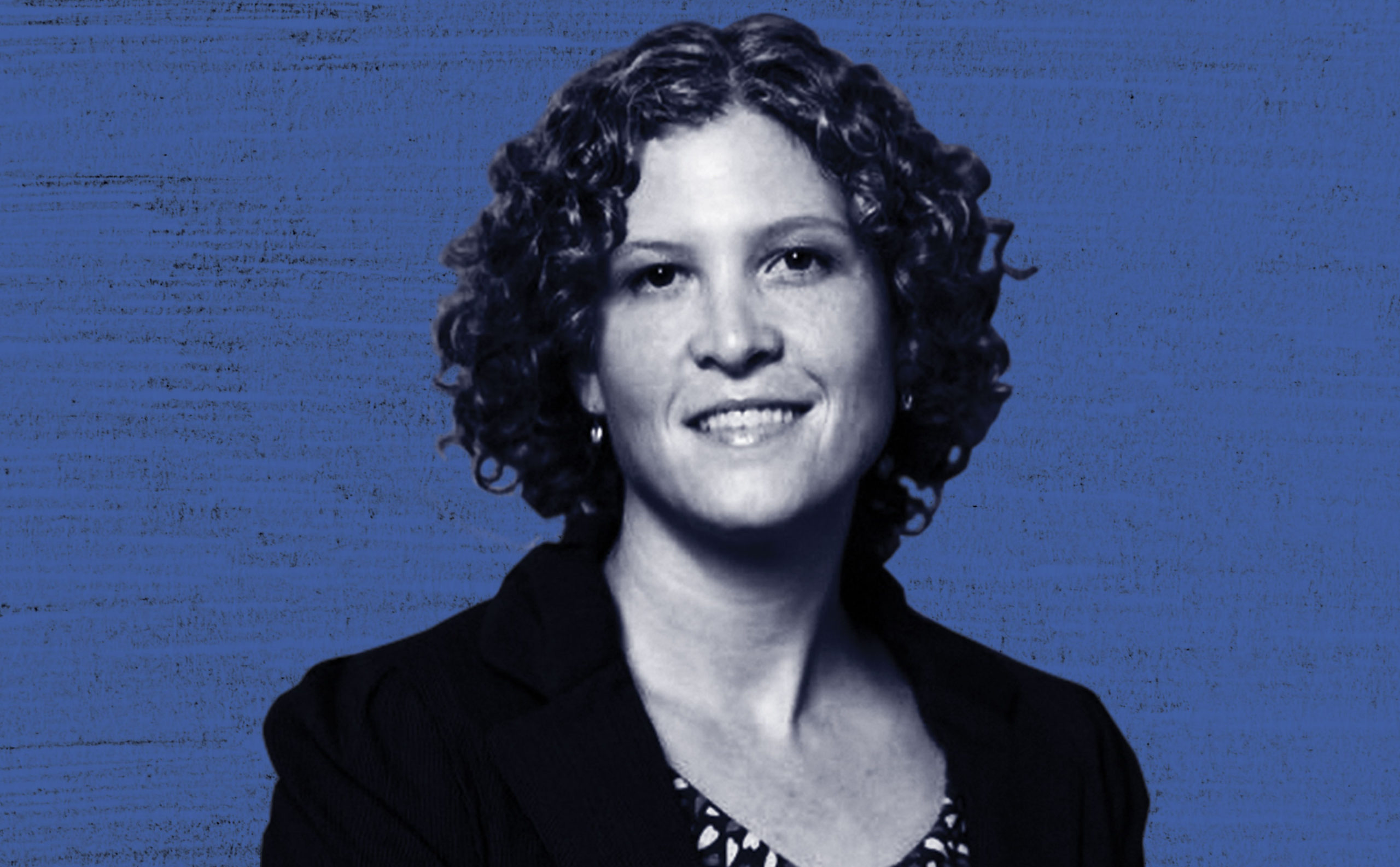
Amy Carroll-Scott
Associate Professor, Community Health and Prevention • Dornsife School of Public Health
Carroll-Scott’s research focuses on understanding and addressing urban health inequities and underlying social inequities. This research consists of rigorous social epidemiological and mixed methods studies applied to the lived experience of urban neighborhoods and schools, driven by community-based participatory approaches.
Camara P. Jones. “Allegories on Race and Racism.” TEDxEmory, July 10, 2014.
As a public health researcher and healthy-equity advocate, I work closely with Philadelphia community organizations and leaders in neighborhoods experiencing poor social, economic and health outcomes to document and understand the root causes. My desire is to co-create and advocate for new public health programs or policies that will lead to community health improvements. However, these efforts are doomed to failure unless they are able to address the systems of oppression that created these severe and persistent racial inequities in the first place.
To illustrate this, I turn to Camara P. Jones, a preeminent physician and researcher in the field of public health. In her TEDx talk called “Allegories on Race and Racism” and in an article in the American Journal of Public Health, Jones shares allegories to illustrate how racism impacts the health of individuals and of populations over time. In her telling of “The Gardener’s Tale,” for instance, a gardener sows red flowers in a bed fortified with fertile soil and sows pink flower seeds in rocky soil. Season after season, the red flowers flourish and grow tall, while the pink flowers do poorly. The flowers’ divergent outcomes seem natural but are actually structural. I teach these allegories to students in the Dornsife School of Public Health to empower them to take action to reduce racism as a primary strategy for achieving health equity and social change.
If we don’t transform our systems of government, education and health care into equitable and anti-racist systems, these inequities will persist.
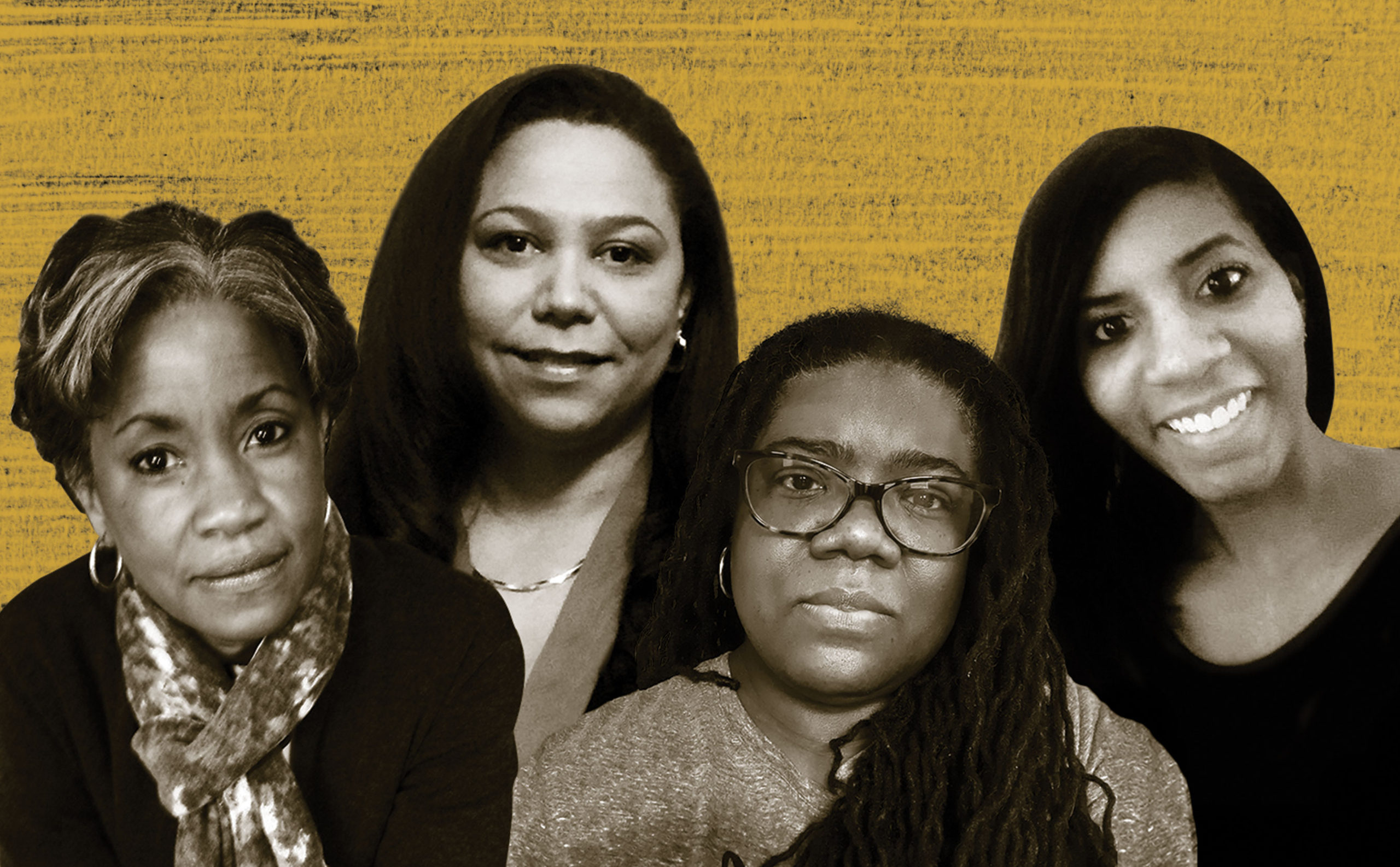
Critical Conversations in Urban Education
School of Education • Submitted by co-chairs Kristine Lewis Grant and Sherri Manson, and committee members Ayana Allen-Handy and Deanna Hill
Sherri Manson, Program Administrator and Assistant to the Associate Deans
Deanna Hill, Associate Clinical Professor
Kristine Lewis Grant, Clinical Professor
Ayana Allen-Handy, Assistant Professor
Since 2012, Critical Conversations in Urban Education (CCUE) has been a vehicle for action and critical dialogue on issues important to the education of youth in urban settings, preparing urban educators and developing university-community partnerships. In February 2018, CCUE hosted a screening and panel discussion on “Teach Us All.”
“Teach Us All.” Directed by Sonia Lowman. Netflix, 2017.
“Teach Us All” is a groundbreaking documentary that honors the “Little Rock Nine” — the nine Black students who desegregated the all-white high school in Little Rock, Arkansas, in 1957. The documentary takes a critical look at educational inequities that continue to plague the United States more than six decades later. Filmmaker Ava DuVernay, whose company distributed the film, told “CBS News” in 2017, “It’s not true that education is equal in this country, because there’s still very intense segregation happening in all kinds of forms all over this country.”
DuVernay likens the film to her own 2016 documentary “13th” about racial inequities in mass incarceration, and says of Lowman, “What I loved about her film and what she did is — I think it spoke to my film, ‘13th,’ in a way — in that we’re trying to deconstruct the truths that are supposed to be evident, are actually falsehoods, are actually kind of veils pulled over an ugliness that America hasn’t dealt with.”
Recommended reading: Drexel’s Department of Sociology compiled “The Philadelphia Racial Justice Syllabus,” to explore our city’s fight for equality through history, available at bit.ly/35TaZ6q. Drexel University Libraries also created an Anti-Racist Pedagogy reading list at libguides.library.drexel.edu/ARPedagogy.
Alumni with questions or concerns for Drexel’s Anti-Racism Task Force can email anti-racism@drexel.edu.


